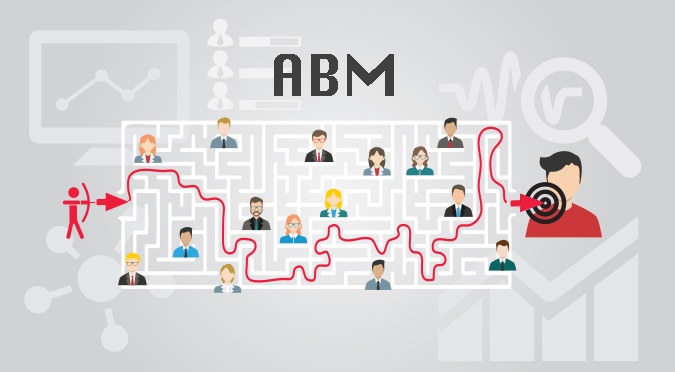Can Account Based Marketing Help Your B2B Business?
Aug 05, 2016 / By Vanessa Horwell
Converting potential buyers is the goal of every B2B business outfit, but there are a wealth of sales and marketing approaches companies use to do that. The latest buzzworthy biz-dev strategy is ABM, or account based marketing – which is attracting increased attention following the announcement earlier this summer that Marketo, a leading automation platform, will soon debut an ABM-specific product offering.
The idea behind account based marketing isn’t all that new – in fact, when described it sounds somewhat old-fashioned: At its core, ABM is about concentrating an organization’s business development efforts on predetermined set of potential targets. To me at least, that brings to mind the ‘account men’ at Sterling Cooper trying to win over new clients during darkly lit lunch meetings. But in today’s online marketing environment, ABM involves no martinis or backroom discussions. Like the more common inbound approach to digital marketing, ABM efforts utilize automation technology to disseminate campaigns and measure outcomes in a sophisticated manner.
Unlike other digital marketing models, however, ABM efforts focus an organization’s marketing resources strategically on high-value accounts – not on potential leads. Here’s a brief rundown on the basics of an account based marketing approach.
Thinking Smaller (but Bigger): Inbound marketing encompasses all of the broad, wide-ranging efforts often deployed by B2C and B2B companies in today’s digital landscape: SEO/SEM, email ‘blast’ marketing campaigns, social media, and more. The goal of all of those efforts: to attract as many potential leads as possible (in line with targeted buyer personas, of course).
The goal of ABM, on the other hand, is to improve marketing efficiency and drive higher revenue without expending greater resources. Key to doing that: Targeting only those potential customers a business really wants to connect with (each with a high potential to drive a large number of sales) and reaching those accounts with a highly personalized, meaningful approach. Done right, that can not only spur income growth, but lead to faster deal cycles.
It’s Cross-Functional: ABM may be a marketing strategy, but it requires interdepartmental collaboration to execute in practice. Jim Williams, vice president of marketing for marketing software developer Influitive, describes ABM as “an evolution from account-based selling that now involves marketing” (meaning it really is a modern extension of the acquisition tactics of the Mad Men era). There must be buy-in on both sides of a biz-dev team to make it successful.
"The idea is to no longer have a massive, wide funnel, but rather to have a highly targeted funnel with very qualified leads,” says Williams. “Competition is much bigger due to the proliferation of B2B technology companies, and there is more noise than ever. Hence, getting back to basics – targeting key customers and retaining them – is the name of the game, and we now couple those principles with technology."
Content is Crucial: As we mentioned before, a key element of executing an ABM approach is reaching prospects with the targeted information of greatest use to each end client or customer. For each individual ABM campaign, the marketing message should be keenly aligned with the attributes and needs of the account being targeted.
As such, content is at the crux of any ABM approach. Whether it’s delivering potential accounts with blog posts, industry-specific reports, personalized emails, or even one-to-one phone or direct mail outreach, it takes a smart resources (and a talented team) to support the content needs that consistently arise from a company-wide commitment account based marketing.
Research, Reach, Repeat: Whereas inbound marketing can be an always-on way to keep a company’s marketing momentum moving, ABM efforts require ongoing investment to keep the wheels spinning. Companies need to constantly be reviewing data (or working with vendor partners), monitoring industry trends, and keeping their ears to the ground for new potential accounts.
Ultimately, investing in ABM means accepting that your customers won’t come to you due to your great branding, high visibility, and smart marketing. Instead, it’s about you coming to them to show why you’re the best solution to meet their needs. That idea isn’t new, but it can be a smart way to keep your marketing engine humming and driving more impactful income growth among B2B buyers.
Sign up for our insights on the convergence of business and PR


